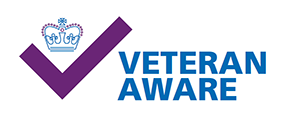Patient Information Leaflets - U
Welcome to the Patient Information Leaflets section
To search for a leaflet, please use the search facility on this page.
Please note if you have any questions or queries relating to the leaflets, please contact the telephone number which appears on the leaflet.
Disclaimer
The information leaflets on this internet site are intended to advise and benefit patients who intend to use, or are using, the clinical services provided by St Helens and Knowsley Teaching Hospitals NHS Trust.
The Trust does not accept responsibility for using the information contained in the leaflets for any other purpose than that described within them.
If you are concerned about your clinical condition you should seek qualified medical advice from your GP or the relevant clinical team at the hospital.
- Upper Gastro-intestinal Department
- Urgent Treatment Centre
Title - Urgent Treatment Centre: Triage and Advice Only Service Explained
Description - Welcome to St Helens Urgent Treatment Centre (UTC). This service sees and treats patients with a wide range of minor illnesses and injuries in both adults and children. The UTC sees people without an appointment. This often means that there is a wait to see a nurse or doctor who can treat you. Many ‘walk-in’ services like Emergency Departments, Urgent Treatment and Walk-in Centres use triage to help keep patients safe while they wait to be seen. - Urology
Title - One-stop female urinary tract symptom (LUTS) clinic
Description - You have been referred to the Lower Urinary Tract Symptom (LUTS) Clinic because you have either received a new referral from your GP, or as a follow up appointment for your urinary symptoms. You may be suffering from urinary frequency, urgency, a poor stream, nocturia (getting out of bed to pass urine) or a feeling of incomplete emptying amongst other symptoms. The clinic is run by nurse practitioners in urology. At this appointment you will have some basic diagnostic tests, assessing your urinary symptoms; these will be done on your arrival to the clinic before you see the nurse practitioner.Title - Patients having Bladder Botox injections
Description - Botulinum toxin A (Botox) has been used for several years for the treatment of a variety of conditions which are caused by muscle over activity. Botox works by binding to the nerve endings of muscles, causing the bladder to relax. Botulinum toxin A injections are used to treat an over active bladder.Title - Post-Operative Instruction for Ureteroscopy, Laser Lithotripsy, Stone Extraction and Stent Placement
Description - The information in this leaflet gives you general advice following your recent endoscopic surgery. After undergoing a Ureteroscopy, it is vital to understand the recovery process and the time it takes to get back to normal. Recovery period allows the body to heal, adjust and regain its strength after the procedures. Remember each person recovers at a different pace. By following post-operative instruction attending follow-up appointments, patient can ensure a smooth and successful recovery.Title - Transurethral resection of bladder tumour (TURBT) as a day case
Description - Your recent cystoscopy (camera into the bladder) has shown a growth in your bladder that needs treatment. During the operation the doctor will examine your bladder once again using a cystoscope. The growth will be removed from your bladder or a sample (biopsy) of the growth may be taken. These will then be sent to the laboratory to be examined under the microscope.






